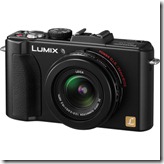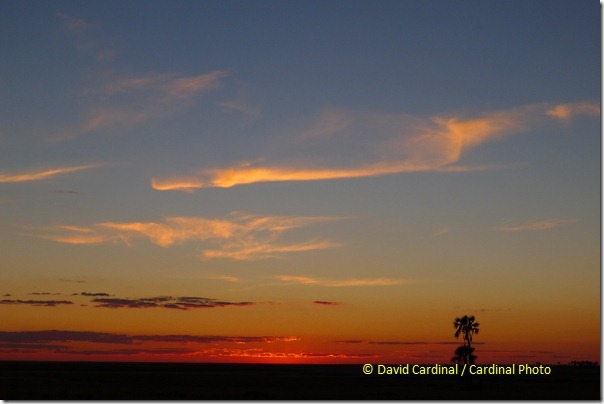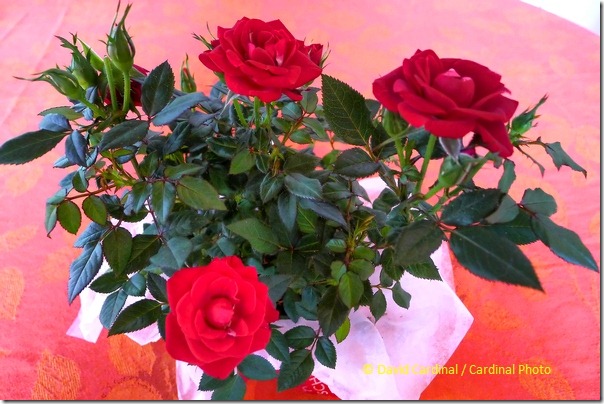- Photo Safaris
- Alaska Bears & Puffins World's best Alaskan Coastal Brown Bear photo experience. Small group size, idyllic location, deluxe lodging, and Puffins!
- Participant Guestbook & Testimonials Candid Feedback from our participants over the years from our photo safaris, tours and workshops. We don't think there is any better way to evaluate a possible trip or workshop than to find out what others thought.
- Custom Photo Tours, Safaris and Personal Instruction Over the years we've found that many of our clients & friends want to participate in one of our trips but the dates we've scheduled just don't work for them or they'd like a customized trip for their family or friends.
- Myanmar (Burma) Photo Tour Myanmar (Burma) Photo Tour December 2017 -- with Angkor Wat option
- Reviews Go hands-on
- Camera Reviews Hands-on with our favorite cameras
- Lens reviews Lenses tested
- Photo Accessories Reviews Reviews of useful Photo and Camera Accessories of interest to our readers
- Useful Tools & Gadgets Handy tools and gadgets we've found useful or essential in our work and want to share with you.
- What's In My Camera Bag The gear David Cardinal shoots with in the field and recommends, including bags and tools, and why
- Articles About photography
- Getting Started Some photography basics
- Travel photography lesson 1: Learning your camera Top skills you should learn before heading off on a trip
- Choosing a Colorspace Picking the right colorspace is essential for a proper workflow. We walk you through your options.
- Understanding Dynamic Range Understanding Dynamic Range
- Landscape Photography Tips from Yosemite Landscape Photography, It's All About Contrast
- Introduction to Shooting Raw Introduction to Raw Files and Raw Conversion by Dave Ryan
- Using Curves by Mike Russell Using Curves
- Copyright Registration Made Easy Copyright Registration Made Easy
- Guide to Image Resizing A Photographers' Guide to Image Resizing
- CCD Cleaning by Moose Peterson CCD Cleaning by Moose Peterson
- Profiling Your Printer Profiling Your Printer
- White Balance by Moose Peterson White Balance -- Are You RGB Savvy by Moose Peterson
- Photo Tips and Techniques Quick tips and pro tricks and techniques to rapidly improve your photography
- News Photo industry and related news and reviews from around the Internet, including from dpreview and CNET
- Getting Started Some photography basics
- Resources On the web
- My Camera Bag--What I Shoot With and Why The photo gear, travel equipment, clothing, bags and accessories that I shoot with and use and why.
- Datacolor Experts Blog Color gurus, including our own David Cardinal
- Amazon Affiliate Purchases made through this link help support our site and cost you absolutely nothing. Give it a try!
- Forums User to user
- Think Tank Photo Bags Intelligently designed photo bags that I love & rely on!
- Rent Lenses & Cameras Borrowlenses does a great job of providing timely services at a great price.
- Travel Insurance With the high cost of trips and possibility of medical issues abroad trip insurance is a must for peace of mind for overseas trips in particular.
- Moose Peterson's Site There isn't much that Moose doesn't know about nature and wildlife photography. You can't learn from anyone better.
- Journeys Unforgettable Africa Journeys Unforgettable -- Awesome African safari organizers. Let them know we sent you!
- Agoda International discounted hotel booking through Agoda
- Cardinal Photo Products on Zazzle A fun selection of great gift products made from a few of our favorite images.
- David Tobie's Gallery Innovative & creative art from the guy who knows more about color than nearly anyone else
- Galleries Our favorite images
Panasonic Lumix LX5—The Ultimate Point & Shoot? (& Canon G12 Comparison)
Panasonic Lumix LX5—The Ultimate Point & Shoot? (& Canon G12 Comparison)
Submitted by David Cardinal on Thu, 06/09/2011 - 18:28
 The holy grail for photographers is a camera that is small enough to fit in your pocket but still takes great images, preferably with not only a reasonable on board flash but the ability to add a hotshoe flash as needed. And of course many of us also consider the ability to shoot Raw files and HD video a necessity in this day and age. This grail was unachievable until recently with the Canon Powershot G12. But now Panasonic has introduced an even more compact camera that fits the bill, the Panasonic Lumix DMC-LX5. To find out whether it measures up I took it to Africa with me and used it for candids, environmentals and some wildlife shots for three weeks. Here’s what I found…
The holy grail for photographers is a camera that is small enough to fit in your pocket but still takes great images, preferably with not only a reasonable on board flash but the ability to add a hotshoe flash as needed. And of course many of us also consider the ability to shoot Raw files and HD video a necessity in this day and age. This grail was unachievable until recently with the Canon Powershot G12. But now Panasonic has introduced an even more compact camera that fits the bill, the Panasonic Lumix DMC-LX5. To find out whether it measures up I took it to Africa with me and used it for candids, environmentals and some wildlife shots for three weeks. Here’s what I found…
Overview of the Panasonic Lumix DMC-LX5 and Canon Powershot G12
The first thing to notice about these pricey point and shoots is that they aren’t targeted at Megapixel freaks. At 9.5MP and 10MP respectively these cameras are targeted at those who are more concerned about overall image quality and low light performance than sheer resolution. A welcome development for serious photographers everywhere! In keeping with this focus they both can also capture Raw image files to maximize the tweaking you can do to the image later on.
Neither camera is a “super-zoom” either. If you are looking for a monster 10x zoom to get those distant action shots, you’ll need to look elsewhere. This is also a great trade-off for the target market as telephoto images with a small sensor point and shoot are disappointing as often as not. So by keeping the lens zoom down to 4x and 5x respectively the two cameras can achieve great optics with their lenses (The LX5 lens varies from f/2 to f/3.3 and the G12’s from a slightly slower f/2.8 to f/4.5)
Shooting with the DMC-LX5
Image quality was never an issue with the LX5. I was frankly blown away by what I could capture by simply setting the camera to “Intelligent Auto” and firing away. More typically I relied on my normal “Aperture priority” shooting which the camera also made easy. The F/2 Leica DC Summicron lens clearly more than holds its own. The lens also natively goes to 24mm (35mm equivalent) at the wide end, making it perfect for both scenics and candids. Of course that means it only goes to 90mm (35mm equivalent) at the long end, so it won’t be much help trying to capture sports on a large field.
The camera was quite quick to power on and get to first shot. Subsequent shots were also relatively quick (about 1/2 second between frames depending on the shooting mode). Raw+JPEG is a shooting option for those who want to hedge their bets.
Similarly the 720p video (and accompanying audio) quality was surprisingly good for a point and shoot. I had no problem mixing video clips along with stills into a 1080p slideshow and having them look good side by side and having the audio from the Lumix LX5 hold up well as part of the soundtrack (The LX5 features Dolby Digital Creator to help it capture high-quality audio—whatever tricks it uses, they work).
There are two other video related innovations I really enjoyed. The first is a dedicated “record movie” button which can be used independent of camera mode to start a video. That was much more convenient than having to find a switch in the dark to get into movie mode. The second is a slider on the lens which changes the aspect ratio between 1:1, 4:3, 16:9 and 3:2. I found that handy when I knew I wanted to be shooting wide format video or stills that were compatible with my D-SLR for example. The only downside is that sometimes that slider moved by accident and it took me a little while to realize what had happened.
The Lumix LX5 also features dozens of shooting modes and is chock full of custom settings. The dial on top is great for moving between the main modes, but I found the buttons on the back very counter-intuitive. If I had one knock on the camera it would be the menu system for the controls. Personally I prefer the Canon Powershot controls or the Fuji controls over the Lumix version.
The only other complaint I have about the Lumix is the lack of an optical viewfinder. Unfortunately that is increasingly the norm, but those who are still clinging to the joys of sighting through their camera can certainly move to the larger Canon Powershot G12 which does feature both LCD and optical viewing.
Looking for a Dad’s Day Gift? Which Camera Should You Buy?
For pure image quality and small size, the Lumix LX5 is a clear win. And at $399 from B&H it is hard to beat the price for all the power it packs. You won’t find more punch in a smaller package. But if you are hooked on having an optical viewfinder or are used to the Canon Powershot user interface and menu system then the Canon Powershot G12 is an amazing camera also at the slightly higher price of $499.
If you’re not sure you want to commit to a high-end and somewhat bulky point and shoot the Canon Powershot S95 is a truly awesome option. It doesn’t quite measure up to the G12 or LX5 in low light (although it does capture both Raw and JPEG images), but it is overall the best value in a cigarette pack sized model.
If like me you’re also interested in carrying the smallest point and shoot you can since the whole point is to have it handy when your big cameras aren’t, then either the Canon Powershot SD4000IS or the new Canon Powershot 300HS are value-packed mid-range models. You probably won’t win any fine art print contests with either but they both take competent images and are small enough that the biggest problem is not losing them in your pocket.
Other Fun With The LX5: HDR and Macro
The LX5 is chock full of other features including a panorama assist, auto-bracketing and macro focusing. I took this flower image by turning on auto-bracketing to +/-1 stop. Even though the image was hand-held and indoors the image stabilization created a set of images which was usable by PhotomatixPro to create a single merged version:
And this image of the signature on a US$10 bill shows just how close and sharp you can get with a point and shoot!
Accessories for the LX5
One potential advantage of higher-end point and shoots like the LX5 is that you can purchase an external flash for it. This will greatly improve your event photography. However I stress potential since of course if your goal is to have a camera that fits in your purse or pocket then carrying a flash might not fit with your shooting style. You can also get an external optical viewfinder. That’s also a cool sounding idea but unfortunately also adds to the height of the camera making it very difficult to stash in a pocket.
Product Web Pages
- Log in to post comments








